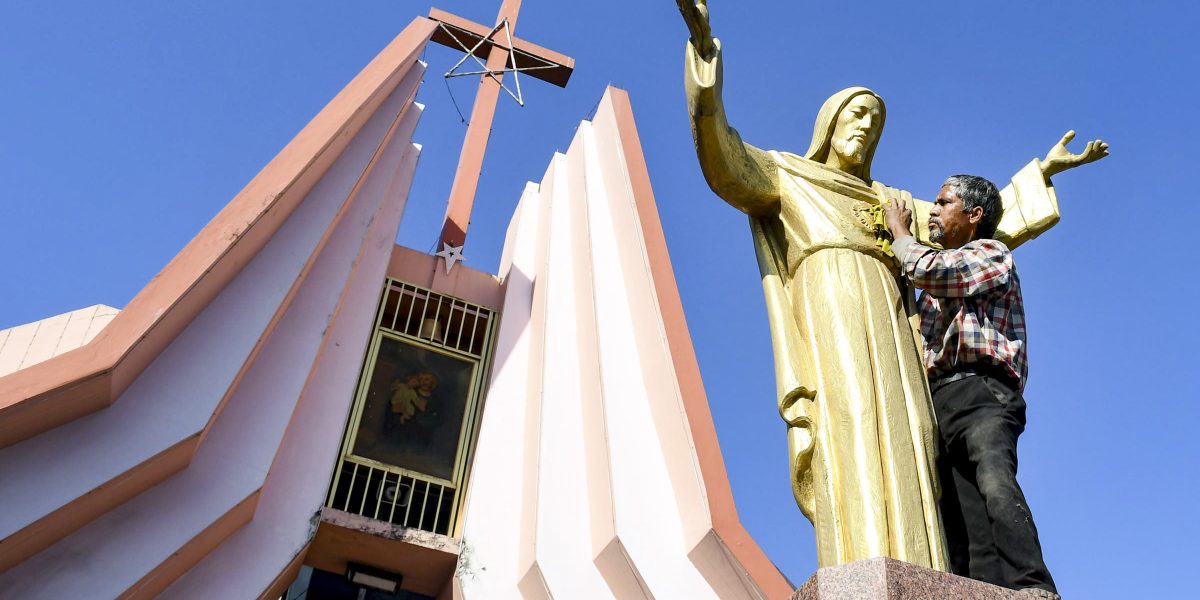
By Fatima Rajina / New Lines Mag
Last weekend saw unrest break out in Leicester, England, between groups of Hindus and Muslims of mostly Indian origin. Over a dozen people were arrested, cars were damaged and police were called away from duties related to the Queen’s funeral to deal with the disturbances in the city, located 160 km northwest of London. Many were shocked by the violence in a place where Hindus and Muslims have lived peacefully, side-by-side, for decades.
The disorder exposes a worrying trend, whereby national politics in India have created fault lines in the diaspora. Hindutva, the divisive political ideology endorsed by Indian Prime Minister Narendra Modi, which advocates for Hindu supremacy – and wants to transform India into an ethno-religious state – has crossed over to Britain.
After Modi’s two electoral victories, in 2014 and 2019, similar scenes unfolded in India.
Videos shared online by Leicester residents show crowds of Hindutva supporters marching through mixed areas. One video depicted hundreds of Hindu men in balaclavas walking past a mosque chanting, “Jai Shri Ram,” which translates from Hindi as “glory to Lord Ram,” a popular slogan, almost like a battle cry, employed by the Hindu right wing during communal violence and protests in India. A Hindu temple in the city was targeted when a man pulled down its flag.
Violence between Hindus and Muslims first flared in Leicester in late August, after the Asia Cup cricket match between India and Pakistan. India condemned the violence “perpetrated against the Indian community in Leicester and vandalization of premises and symbols of Hindu religion,” said its high commission in a statement on Monday.
But blaming cricket for what has happened ignores the tensions that have slowly and quietly simmered for some time below the surface.
Leicester’s Mayor Peter Soulsby blamed social media disinformation for the sharp escalation, telling BBC’s Radio 4, “There’s no obvious local cause for this at all.” In India, fake news on social media is often the cause of similar clashes. In November last year, after mob attacks on four mosques and several Muslim-owned homes and businesses in the northeastern state of Tripura in India, which took place on the sidelines of a Hindu nationalist rally, the police went looking for owners of 100 social media accounts for spreading fake news about targeted Hindu deaths in neighboring Bangladesh.
To understand these events, and the recent violence in Leicester, we must understand the Rashtriya Swayamsevak Sangh (RSS), and why fomenting division between Hindus and Muslims is a pivotal part of its ideology.
The RSS is an organization set up in the early 1920s, modeled on the Italian fascist leader Benito Mussolini’s Black Shirts, which in turn formed some of the inspiration for the Nazi party. Its goal is to create a “pure” India, devoid of the country’s large Muslim and Christian populations, leaving only adherents of the Dharmic religions of Hinduism, Jainism and Sikhism. Its first real “political” success was whipping up violence between Hindus and Muslims that led to the demolition of the Babri mosque in 1992, causing the deaths of at least 2,000 Muslims in the northern Indian state of Uttar Pradesh.
This story was originally published in newlinesmag.com. Read the full story here





